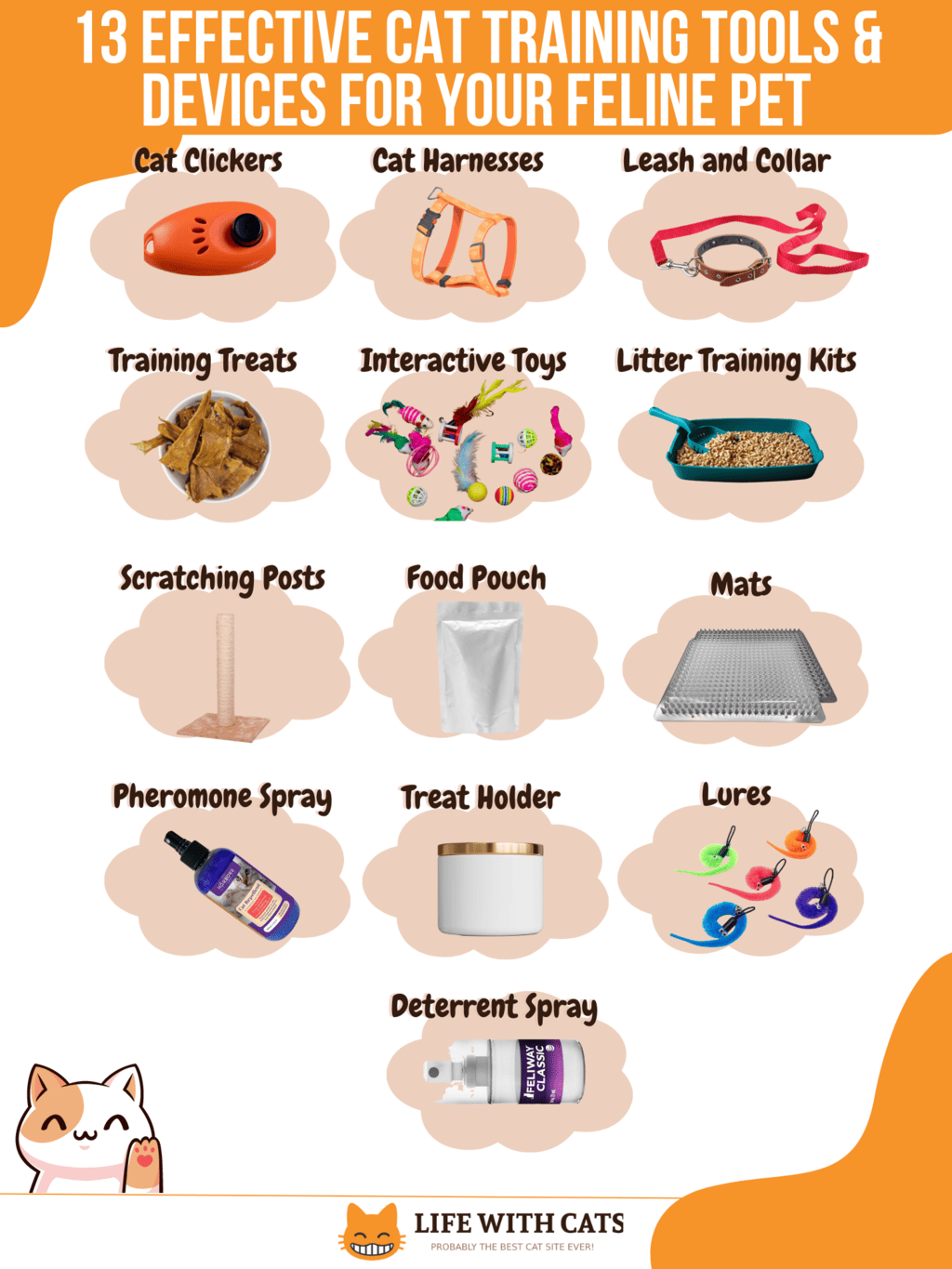Cat training tools are devices that you can use to train and modify your cat’s behavior, discourage bad behavior, and improve the relationship between you and your feline friend.
You can train your pet cat in the same way you’d train your dog to make your cat behave how you want her to. In this guide, we review 13 different types of cat training aids, including clickers, harnesses and leashes, treats, toys, scratching pads, pheromone sprays, and lures.
Using cat training tools and devices has many benefits, including modifying undesirable behavior such as scratching your furniture, strengthening the bond between you and your pet, providing mental and physical exercise for your pet, and reducing your cat’s stress levels.
In this guide, we provide you with many helpful tips on using cat training tools, including the easiest way to persuade your cat to wear a harness and leash. We also take a look at the current trends in cat training devices, including some excellent new pheromones to calm your feisty feline.
Keep reading to learn everything you’ll ever need to know about using and choosing cat training tools and devices for your beloved feline pet!
13 Types of cat training tools
The different types of cat training tools are listed below, with an overview of each one and how it works.
Cat Clickers
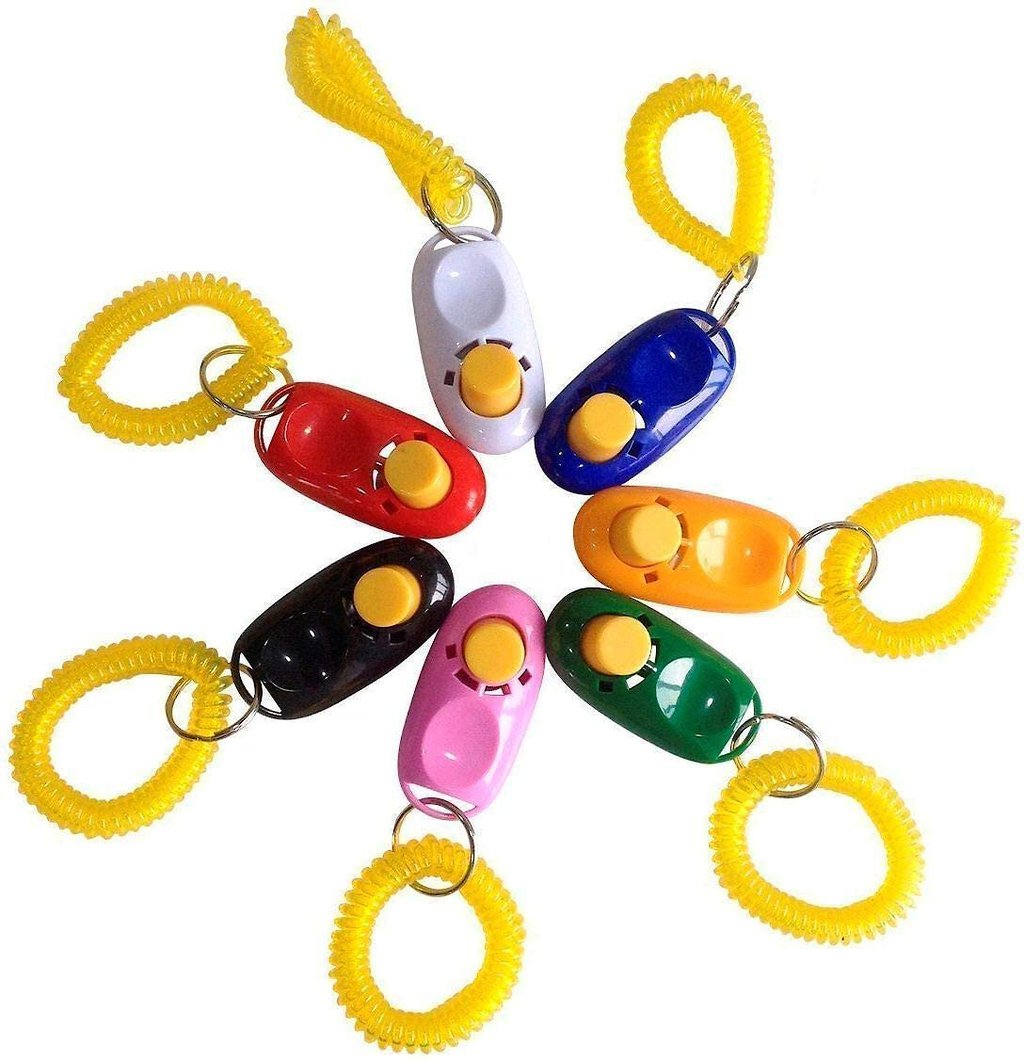
A clicker is a small device that you hold in your hand and squeeze and press to create a clicking sound. Used during positive reinforcement training, the clicker is paired with a reward to tell the cat she’s done the right thing.
Cat Harnesses
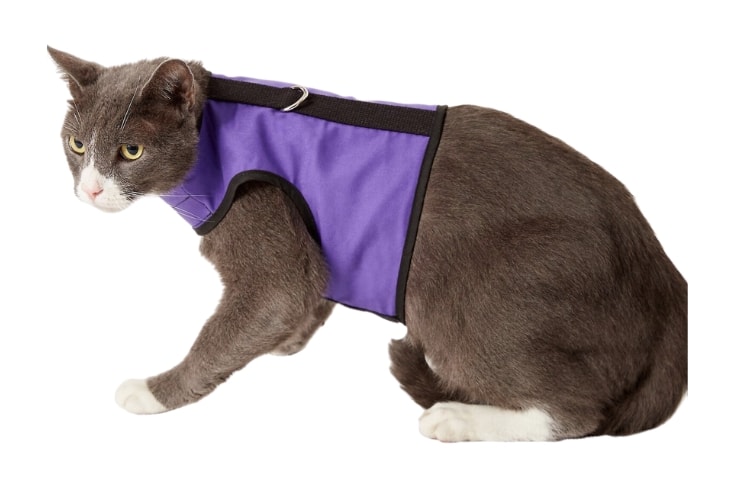
You use a cat harness in tandem with a leash to teach your cat to walk alongside you. That enables you to control your cat and stop her from escaping while she enjoys the outdoors under your supervision.
Often, owners of high-value cats or felines with physical disabilities choose to give their pets a taste of the outdoors on a harness and leash.
Leash and Collar Sets
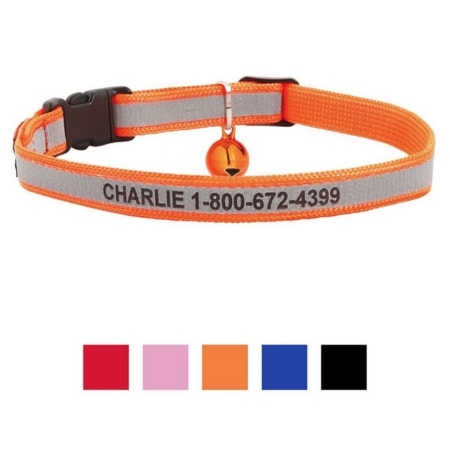
You can use a collar and leash instead of a harness and leash to walk your cat outside, although it’s possible to hurt your cat if she darts away from you and the collar pulls on her neck.
For that reason, I prefer to use a harness and leash combo for walking my cats.
Training Treats, Kibble

Many cats are food-oriented and will do anything for a treat or a piece of tasty kibble! So, a food pouch containing a good supply of training treats is a must.
Interactive Toys
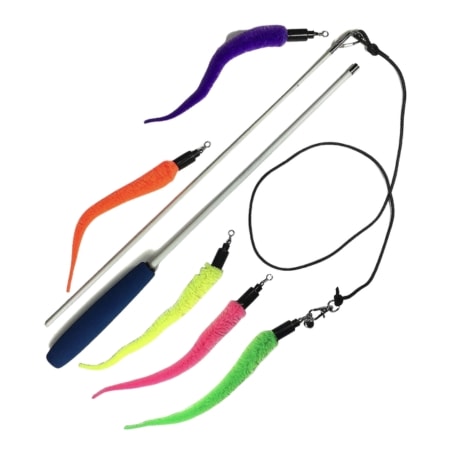
You can use interactive toys to encourage your cat to work out a challenge or solve a problem to get one of those delicious rewards. Toys mentally and physically stimulate cats, as well as teach them problem-solving skills.
Litter Training Kits
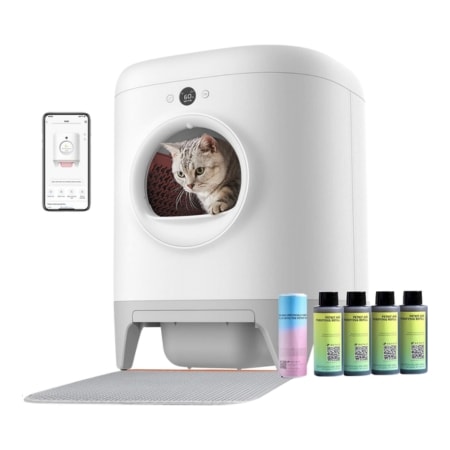
A litter training kit is a must if your cat spends any time inside your home.
Kits often come with sprays to encourage the cat to relieve herself in the tray, although I’ve never had a problem with litter training any of my cats, and using a litter tray comes almost as second nature to most felines.
Scratching Posts and Pads
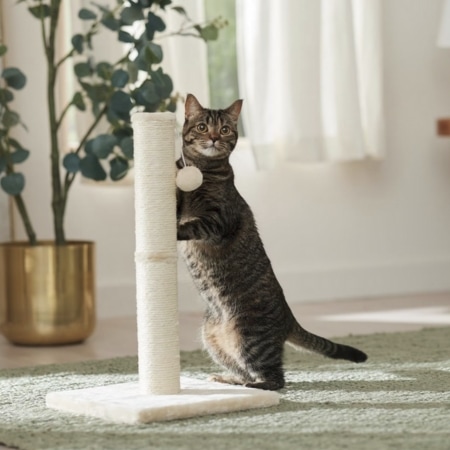
A common behavioral problem in cats is scratching on furniture and floor coverings. As part of your training tool kit, a scratching post or pad is essential to teach your pet where it’s acceptable to scratch.
Food Pouch
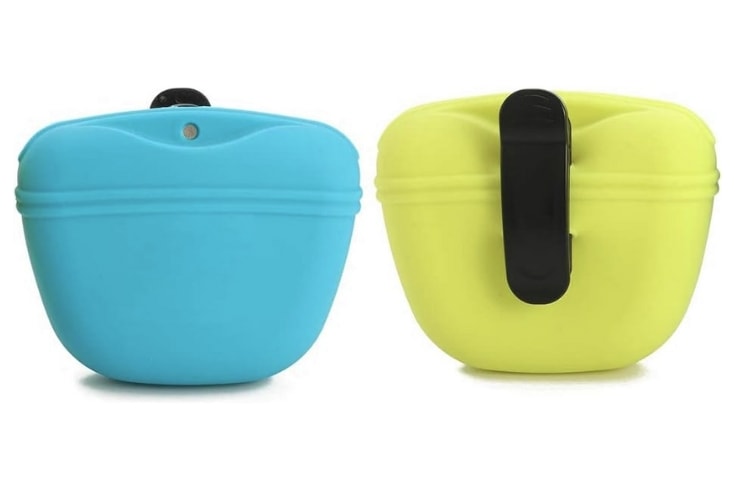
A neat food pouch is essential to hold all those delicious training treats!
Mats
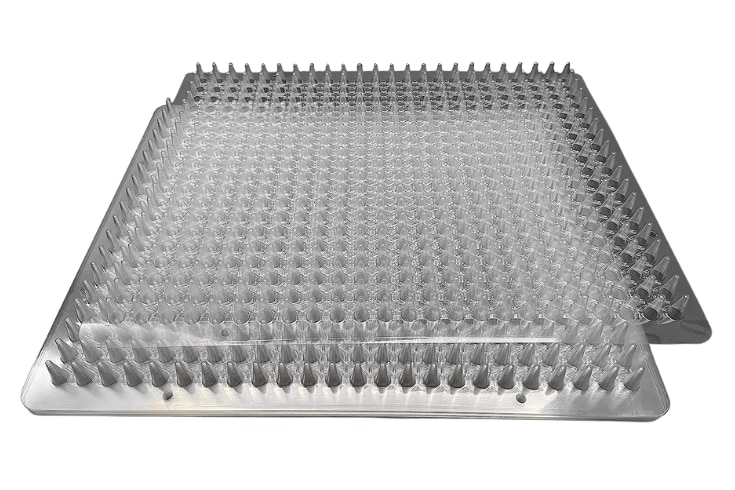
If you want to keep your cat off a particular area in your home, you might want to use a cat scat mat.
The battery-operated mat produces a tiny electrical pulse that’s enough to startle your cat away without hurting her.
Pheromone Spray
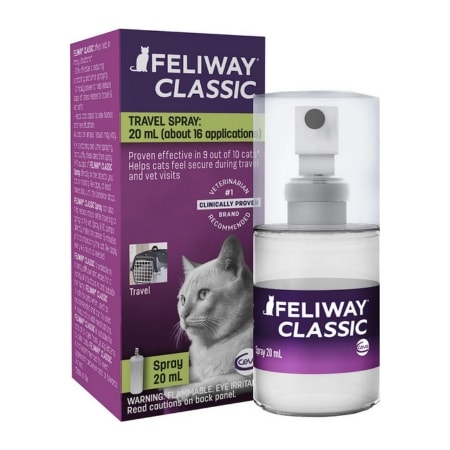
Pheromone sprays can be used to calm aggressive or nervous cats, and they come in spray or plug-in format.
Deterrent Spray

Deterrent sprays train your cats to keep away from particular areas in your home and garden.
These sprays contain harmless scents that cats hate and can be highly effective deterrents.
Treat Holder
A treat holder is similar to a food pouch and is designed to hold all those delicious rewards your cat craves!
Lures
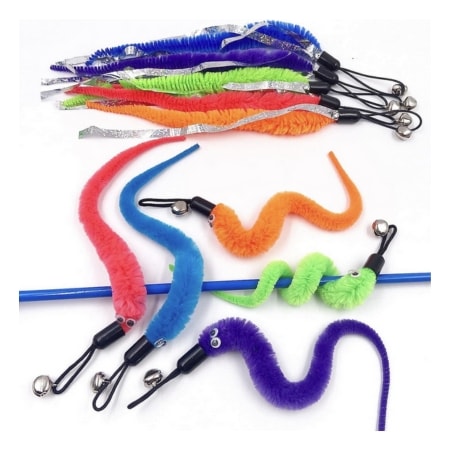
A lure is a type of interactive toy that you can use to play with your cat. Most lures look like fishing rods with feathers or small fluffy toys attached to the end.
My cats love their lure toy and actively try to persuade me to play by dragging it out of its storage place to where I’m sitting!
What are the benefits of using cat training tools and devices?
The benefits of using cat training tools and devices are as follows:
- Cat training tools can help your cat understand and respond to your commands.
- Most cat training devices focus on positive reinforcement to reward your cat’s desirable behaviors, making the training experience more positive and enjoyable for your pet.
- Many cat training tools can modify undesirable behaviors in cats, such as deterrent sprays and scratching posts.
- Interactive cat toys provide mental stimulation and physical exercise for your cat, preventing boredom and destructive behaviors.
- Cat training tools can help to build a stronger bond and trust between you and your feline friend.
- Training tools, such as harnesses and leashes, help keep your cat safe outdoors by preventing her from escaping.
- Some training aids, such as litter boxes, can help keep your home clean and tidy, and de-stressing pheromones can help to relax your cat, making training her easier.
How do I use cat training tools? (Do’s & Dont)
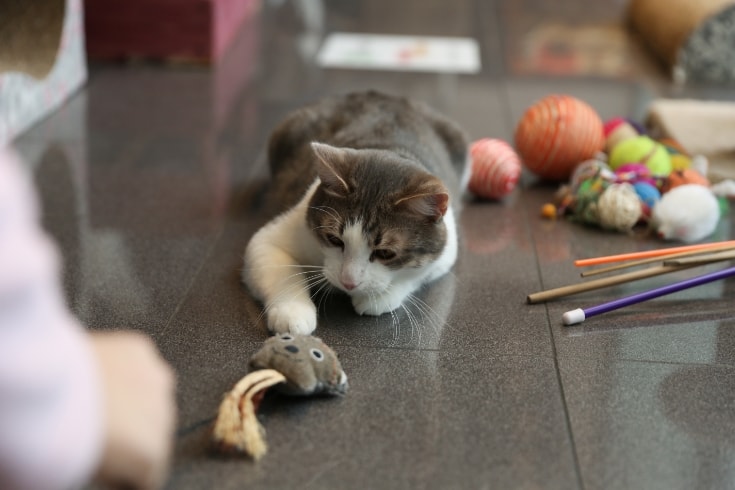
You can use cat training tools with positive reinforcement training and plenty of rewards to teach your cat desired behaviors and help modify undesirable behaviors, such as aggression and destructive behavior.
Dos …
- Use positive reinforcement tactics and reward-based training.
- Start your training by teaching your cat simple, basic commands.
- Be consistent and patient in your training approach.
- Choose training tools that are humane, safe, and appropriate for your cat’s needs and temperament.
- Make training fun and rewarding for your cat by using lots of praise and treats when she does what you want.
Don’ts …
- Never use physical punishment or force when training your cat, as that creates fear and resentment, which will set back the training process and harm the bond you’re trying to build with your pet.
- Don’t overwhelm your pet with commands or tasks that are too difficult for her level of training. That approach will only lead to frustration and hinders the training process.
- Avoid training your pet when she’s tired, hungry, or in a playful or aggressive mood.
- Don’t try to rush training your pet. Patience and consistency ensure a gradual progression in your pet’s training and are the key to successful, harmonious training.
Tips for first-time users of cat training equipment and devices
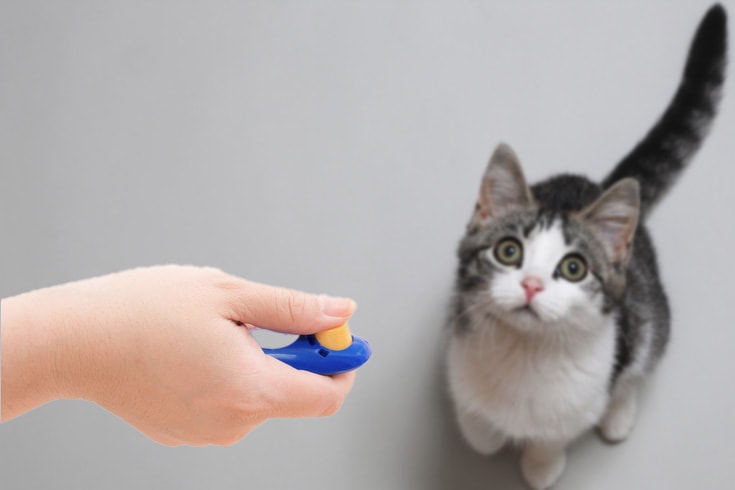
Some tips for first-time users of cat training equipment and devices are as follows:
Do …
- Take time to understand your cat’s temperament and behavior before you begin your training program. That helps you to devise a training approach that fits your cat’s needs and makes success more likely.
- Cats generally respond best to positive reinforcement and reward-based training approaches. So, always use plenty of treats, praise, and other rewards while training your cat.
- Start with the basics, such as teaching your cat to “come” or “sit.”
- Keep training sessions short, gradually increasing the duration in line with your cat’s response.
- Clicker training is a very successful, popular method of cat training that often brings good results.
- Keep your training methods and commands consistent, remembering to reward your cat when she displays the behavior you want.
- Be patient! Cats can take longer to train than dogs, so don’t try to rush things.
- Before you begin training, take the time to introduce new training tools and devices to your cat so that she’s comfortable and confident with the item.
Don’t …
- Never get impatient or cross with your cat if she doesn’t learn as quickly as you hoped.
- Never punish your cat by yelling at her or using physical punishment.
- Don’t try to force your cat to wear a harness and leash if she’s afraid or resistant. Trying to wrestle your cat into the harness can lead to an aggressive response, and you could be scratched or bitten.
- Don’t be afraid to seek professional advice if you’re struggling to train your cat, especially if your pet is aggressive or very destructive around your home.
What Should I Look for in Quality Cat Training Tools?
Good quality cat training tools should be well-made and have good customer reviews when you check them out online.
Frequently Asked Questions
Here are the answers to some of the most frequently asked questions about cat training tools and their use.
When Should I Start Using Cat Training Tools?
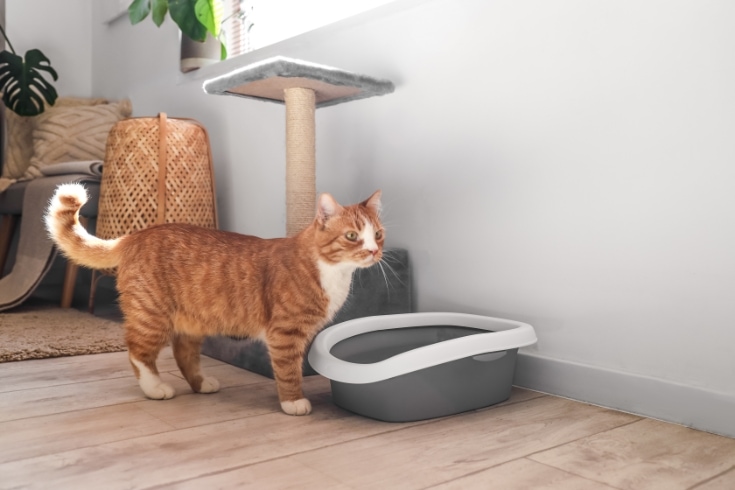
You can start using cat training tools with cats of any age, from kittens to senior cats.
Both my kittens loved using interactive toys and quickly learned a few simple commands in return for their favorite treats. Also, I once had a senior cat of 14 years of age that still enjoyed daily training sessions until the day he passed away at the ripe old age of 18.
How Often Should I Use Cat Training Tools?
Your training will be most successful if you factor in a few short training sessions every day, and you can use your cat’s favorite training tools in those sessions.
Where Can I Buy Cat Training Tools?
Cat training tools and devices are available to buy at most good pet stores and online. In addition, many vet clinics carry a small range of cat training tools.
Can I Make DIY Cat Training Tools at Home?
You can save quite a lot of your hard-earned cash by making your own DIY cat training tools at home. Check out this video to learn how to make a simple cat training toy.
Can Cat Training Tools Help with Aggressive Behavior?
You can sometimes use cat training tools to help modify some aspects of your cat’s aggressive behavior, depending on its cause.
Before attempting to train an aggressive cat, you first need to understand what’s making your furry friend aggressive. So, be prepared to consult your vet to rule out pain or discomfort, especially if your cat has suddenly become aggressive for no apparent reason.
If you take on a shelter cat that has aggressive tendencies and any physical problems have been ruled out, consult a professional animal behaviorist for advice.
Are Cat Training Tools Safe for My Cat?

Cat training tools are safe for your cat, provided you use them properly and with due care.
For example, if you teach your cat to walk in a harness and leash, ensure the harness fits correctly without rubbing or chafing, and if you want your cat to wear a collar, ensure the collar isn’t too tight for comfort.
Do Dog Whistles Work On Cats?
Dog whistles are also known as Galton’s or silent whistles. These whistles emit a sound in the ultrasonic range that cats and dogs can hear but humans can’t. Some cats respond well to a dog whistle, so using one can be useful in their training.
Future Trends In Cat Training Equipment And Devices
The future trends in cat training tools are largely geared to technical developments, including the following gadgets:
Cat Wheels
Indoor cats can sometimes struggle to maintain a healthy weight, usually because of a lack of exercise.
So, innovative designers have developed giant cat wheels designed to help cats get high levels of activity, reducing stress and keeping their weight within healthy parameters.
Live Monitoring Devices
Live monitoring devices enable you to keep an eye on your cat remotely and even talk to her while you’re away from home, which can help relieve the stress suffered by cats with separation anxiety issues.
Automated Litter Boxes
Automated litter boxes can sense when your cat has left the device, rotate the litter box, and remove used litter into a separate collection tray below.
Some of these devices have an integrated AI unit that provides you with information about your cat’s toilet habits and weight, giving you valuable insights into your pet’s health.
In Conclusion
Cat training tools are aids that you can use to train your cat and modify her behavior, discourage bad behavior, and improve the relationship between you and your feline friend.
You can use clickers, harnesses and leashes, treats, toys, scratching pads, pheromone sprays, and lures to train your pet to behave in the way you want, make her life less stressful, and help to keep your relationship with your furry friend harmonious and happy.
What’s your cat’s favorite training tool? Tell us in the comments box below.
